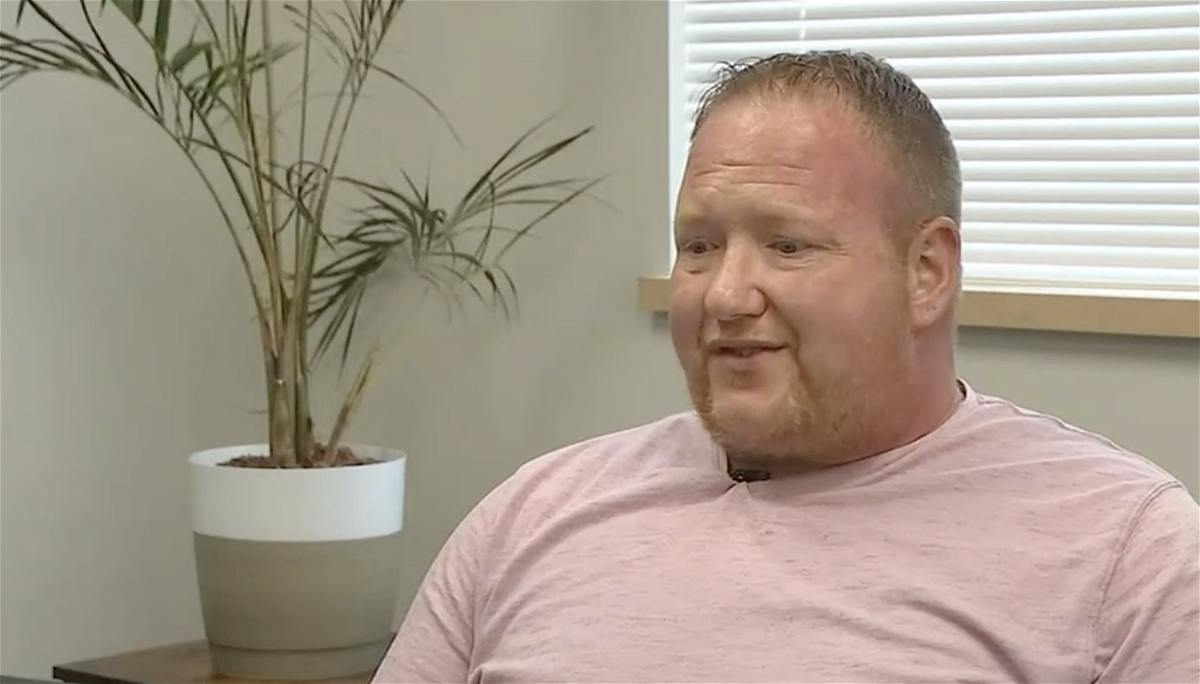Hooked on fentanyl: Salem man shares journey to sobriety

Michael Padrta is hopeful to finally be on a new path after almost 40 years of drug use and two stints in prison.
By Kandra Kent
Click here for updates on this story
SALEM, Oregon (KPTV) — From the couch of his addiction treatment center, 49-year-old Michael Padrta is hopeful to finally be on a new path after almost 40 years of drug use and two stints in prison.
“I started using at 11,” Padrta told FOX 12 in a recent interview. “I started using meth at about 15 and was drinking all through that.”
In recent decades, heroin was the Salem man’s drug of choice, until more recently.
“With fentanyl, it’s so accessible, and it’s a lot easier to use it because you don’t have to necessarily inject it, you can smoke it and that’s what I did,” Padrta said.
“It was an easy transition,” Padrta added. “There was a huge exodus from heroin to fentanyl with just about everyone I knew.”
Illicit fentanyl: now king of the opioid crisis and linked to tens of thousands of deaths in the U.S., according to the Centers for Disease Control.
“Around three years ago, when the pandemic hit, it was mostly heroin,” said Rhonda Woodside, a nurse practitioner, who specializes in addiction treatment. “And then heroin started having fentanyl in it, now I would say 95% of what we see is just straight fentanyl.”
Woodside works in Eugene at Ideal Option, a company with clinics across the United States, where providers prescribe medications to help treat addiction to drugs or alcohol.
“They come in and say, ‘I’m either smoking the fentanyl powder’ or ‘I’m smoking or snorting the fake oxy pills on the street,’ which contain fentanyl,” Woodside said.
This new landscape in the world of addiction is tough territory for those trying to get clean.
“It’s harder. It makes people more sick,” said Rachel Overall, a peer outreach specialist at Ideal Option.
“People go into withdrawal two to three hours after using fentanyl,” Overall said.
Padrta agrees that quitting fentanyl has been the toughest.
“The detox is the worst I’ve ever experienced in my life,” Padrta said. “I’ve kicked more times than I can remember, heroin, but the detox from fentanyl was so intense that I was actually hallucinating.”
That’s why some addiction experts – like Woodside – say adding special medications to treatment plans can ease illness and cravings. For some, it’s a game-changer in recovery and long-term sobriety.
“We consider the medication that we provide more of a maintenance medication to help you. This is a disease, like high blood pressure,” Woodside said.
You may have heard of these prescription drugs.
“Initially, I started on Suboxone,” Padrta said.
The medications are known as buprenorphine’s and were approved by the FDA more than 20 years ago to treat opioid-use disorders.
But it hasn’t always been easy for health providers to prescribe them. The controlled substances are still opioids, and until recently, the Drug Enforcement Agency required clinicians to obtain what’s known as a special ‘X-waiver license’ to treat patients with buprenorphine.
It was just this past January, when Congress, as part of a bipartisan spending package, did away with X-waivers – effectively removing what health experts have long called a barrier to treatment.
Subsequently, it’s expected more providers will start prescribing the drugs, with the White House calling it a step toward “closing the addiction treatment gap.”
In Oregon, only about half of physicians and prescribers have ever treated a patient with a buprenorphine, according to the Oregon Health Authority.
Further data shows only about 35% of those clinicians prescribe the drugs more than a few times a year, according to an OHA spokesman, who in an email, also told FOX 12 it’s a “situation where a fairly small amount of providers provide the vast number of prescriptions in Oregon, which creates “gaps” geographically in terms of access to this medication.”
OHA said there was about a 2% increase in buprenorphine prescriptions from 2020 to 2021.
Padrta now gets injections of Sublocade once a month, telling FOX 12 it’s one of many tools he’s used to stay clean for more than nine months now.
“It keeps me from being sick,” Padrta said. “I don’t have any sort of withdrawals and of course, the risk reduction is incredible, but it makes it so I have a normal life — I’m just normal.”
In addition to taking medication, Padrta said he participates in Narcotics Anonymous and attends outpatient treatment three days a week.
Focused on the future, Padrta said he’s never been more optimistic about his life.
“I’m grateful that I can choose to do whatever I want to do, there’s nothing holding me back,” Padrta said.
And for others struggling with addiction, Padrta story offers hope.
“There’s help, you don’t have to do it alone,” Padrta said.
Please note: This content carries a strict local market embargo. If you share the same market as the contributor of this article, you may not use it on any platform.
